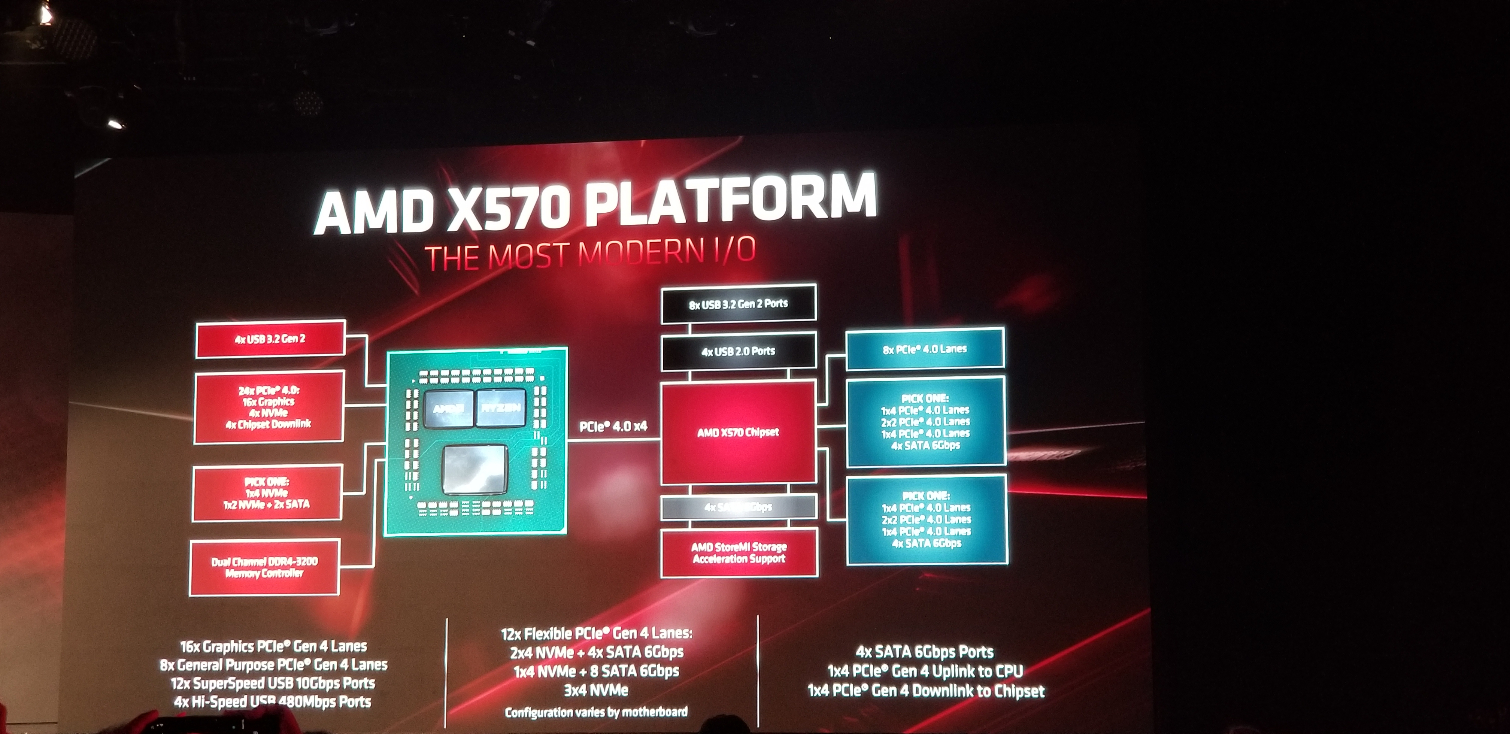hi all, two quick questions
1)
many x570 motherboards (for example MSI MPG x570 Gaming Edge Wifi) list the chipset M.2 slot as 3.0 x4
now i know that the x570 chipset should have a total of 4.0 x4
so i suppose that the chipset M.2 slot has 4.0 x2 and they just write it as 3.0 x4?
what makes me unsure is that i remember that in most previous generation motherboards, the chipset M.2 utilizes the full chipset bandwidth and that in previous generations the total chipset lanes were one generation lower (2.0 x4 for example) than the cpu lanes as well
so it makes me wonder if the M.2 slot does utilize the full chipset bandwidth but that is not 4.0 x4 but 3.0 x4
im just a bit confused by the way its written and because of (2)
2)
the Asus Pro WS X570-ACE specifications mention:
pci-e slots:
- chipset: 1 x PCI Express 4.0 x 16 slots (max. at x8 mode)
how the hell is it possible for the chipset pci-e slot to be 4.0 x8 (we are not talking about the physical dimensions which is x16 but the bandwidth which is clearly listed as x8) when the chipset is 4.0 x4?
it doesnt add up and this is what made me wonder about the M.2 slots bandwidth as well
thank you very
1)
many x570 motherboards (for example MSI MPG x570 Gaming Edge Wifi) list the chipset M.2 slot as 3.0 x4
now i know that the x570 chipset should have a total of 4.0 x4
so i suppose that the chipset M.2 slot has 4.0 x2 and they just write it as 3.0 x4?
what makes me unsure is that i remember that in most previous generation motherboards, the chipset M.2 utilizes the full chipset bandwidth and that in previous generations the total chipset lanes were one generation lower (2.0 x4 for example) than the cpu lanes as well
so it makes me wonder if the M.2 slot does utilize the full chipset bandwidth but that is not 4.0 x4 but 3.0 x4
im just a bit confused by the way its written and because of (2)
2)
the Asus Pro WS X570-ACE specifications mention:
pci-e slots:
- chipset: 1 x PCI Express 4.0 x 16 slots (max. at x8 mode)
how the hell is it possible for the chipset pci-e slot to be 4.0 x8 (we are not talking about the physical dimensions which is x16 but the bandwidth which is clearly listed as x8) when the chipset is 4.0 x4?
it doesnt add up and this is what made me wonder about the M.2 slots bandwidth as well
thank you very
Last edited:
![[H]ard|Forum](/styles/hardforum/xenforo/logo_dark.png)

